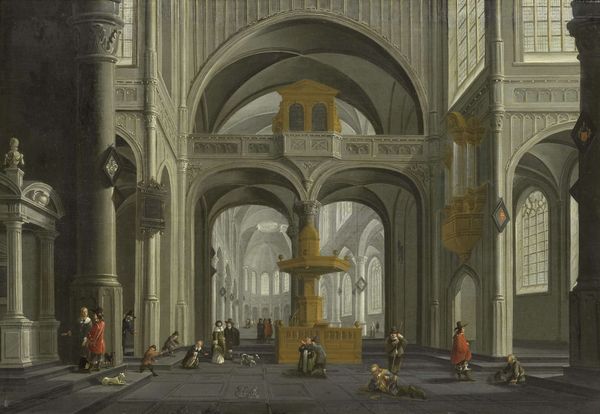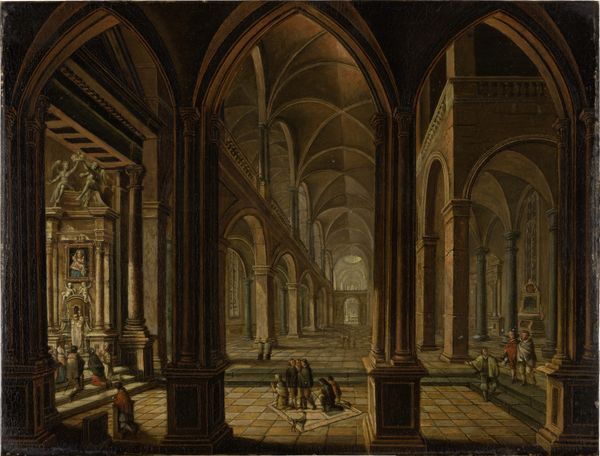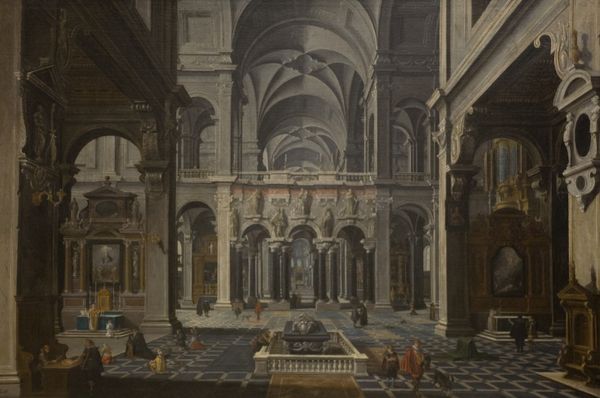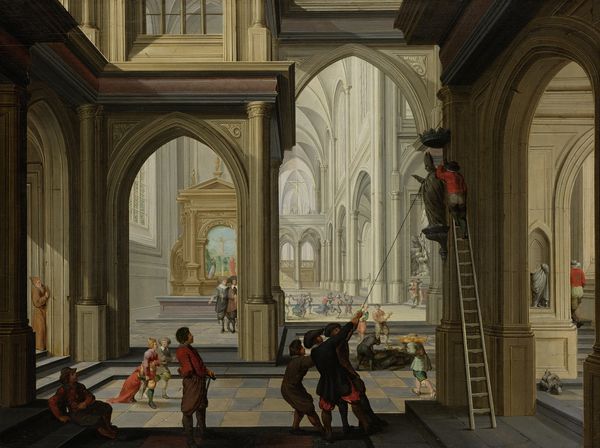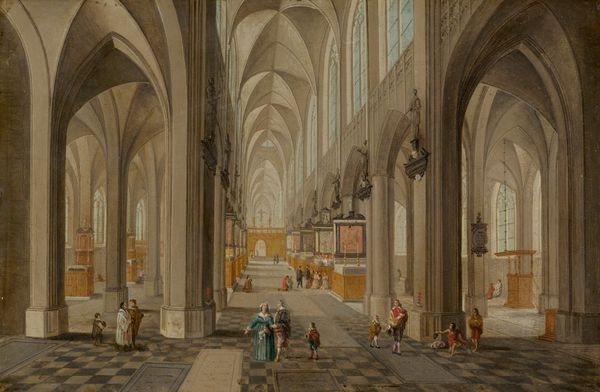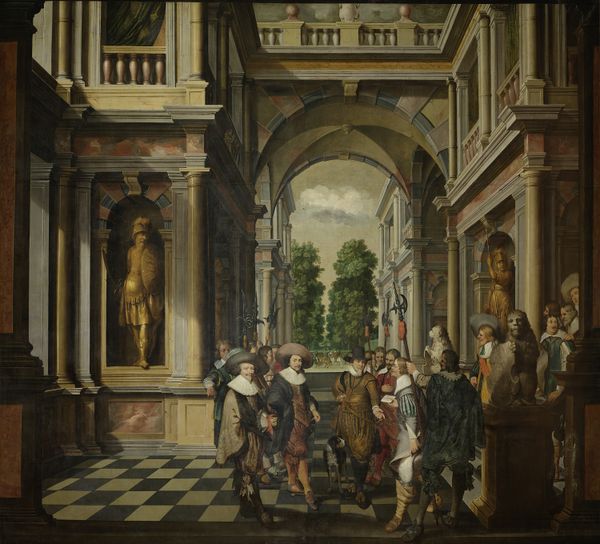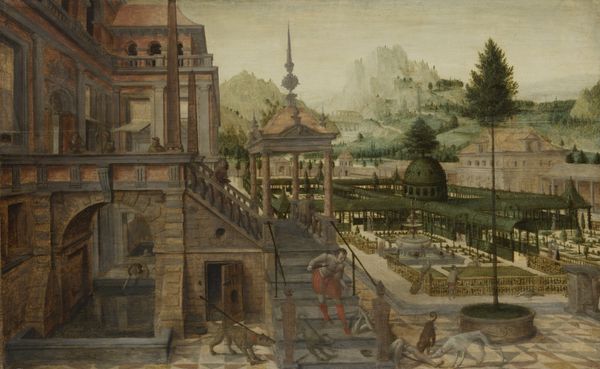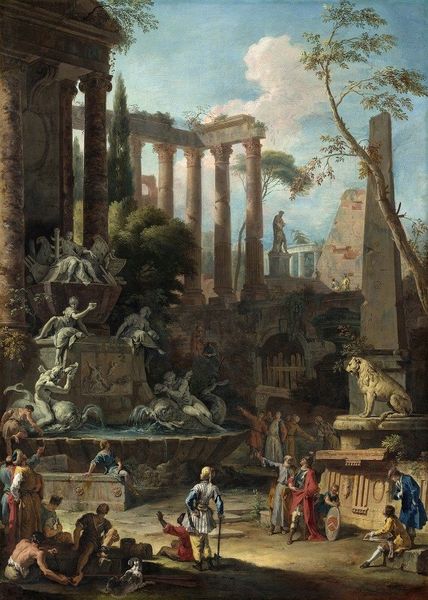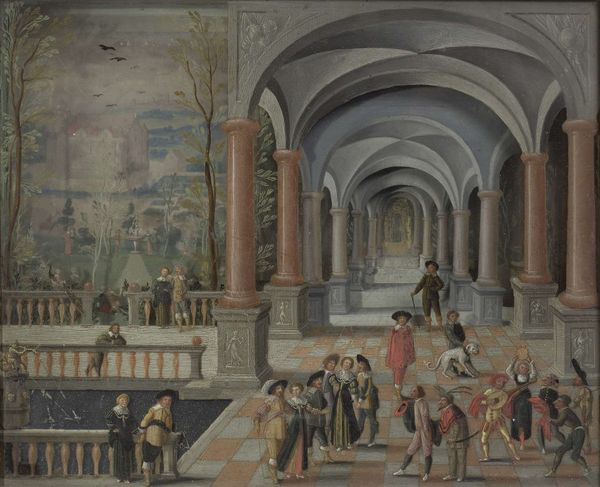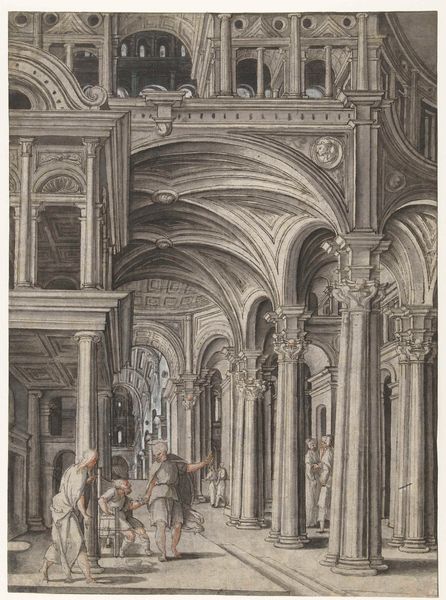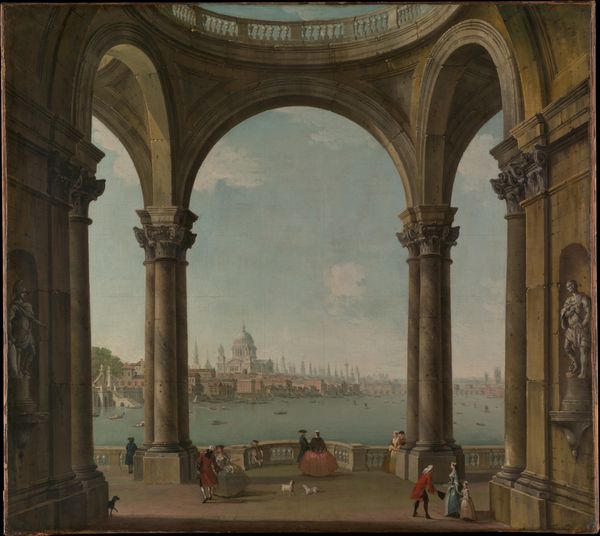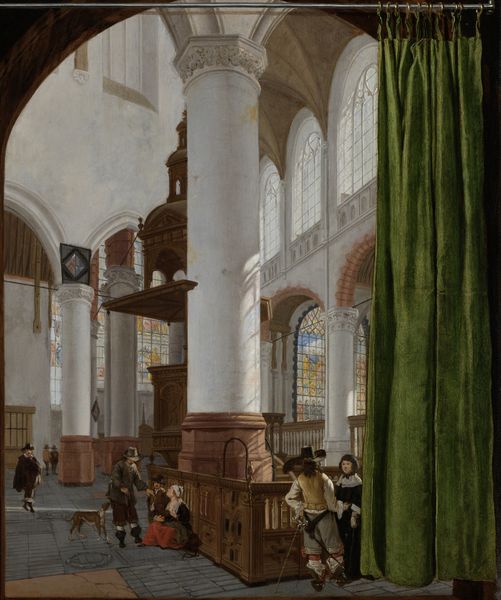
painting, oil-paint, architecture
#
baroque
#
painting
#
oil-paint
#
oil painting
#
cityscape
#
genre-painting
#
architecture
Dimensions: height 93 cm, width 127.5 cm, depth 7.5 cm
Copyright: Rijks Museum: Open Domain
Curator: Welcome. Before us hangs Hendrick Aerts's "Imaginary Renaissance Palace," an oil painting dating back to 1602. Editor: It feels like a stage set. The light is cool, almost theatrical, and that architecture seems less about building than about creating an impression of grandeur. Curator: Exactly. Think about what was considered luxury and power at that time—grand architectural statements of the Renaissance. This painting embodies that elite consumer desire. But look closer—the perspective seems almost intentionally flawed, disjointed. Editor: You’re right! It almost creates a sense of unease, even while showcasing the idealized opulence of the era. See how the painter's brushwork contrasts between sharp, detailed highlights and then loose strokes that don't delineate form or spatial relation accurately? This adds tension. The cool tonality further heightens that strange disconnect I felt initially. Curator: Consider that Aerts likely never experienced that kind of aristocratic privilege personally. This idealized depiction of labor as play must've been at stark contrast to the socio-economic context. Editor: Right, this makes me consider that the Baroque wasn't only concerned with magnificence and dynamism, but this strange artificiality. It's as if the architecture, and even the people, are props in an elaborate production. What of these themes interests you most? Curator: How art like this reinforced societal expectations, feeding a particular worldview concerning elite culture—while erasing the actual makers of this world. The social commentary, however implicit, is compelling. Editor: For me, it’s this fascinating tension. Aerts creates beauty while simultaneously laying bare the constructed nature of that beauty through his somewhat unsettling aesthetic choices. A formal approach might ask us to decode its pictorial rhetoric using established semiotics. Curator: And thinking materially, it is crucial to recognize the role of painting itself as an commodity to propagate this cultural power. Editor: I will remember that when contemplating the labor of the hand. Curator: The complexities within it are profound and open many interpretive portals for our visitors today. Thank you!
Comments
No comments
Be the first to comment and join the conversation on the ultimate creative platform.
